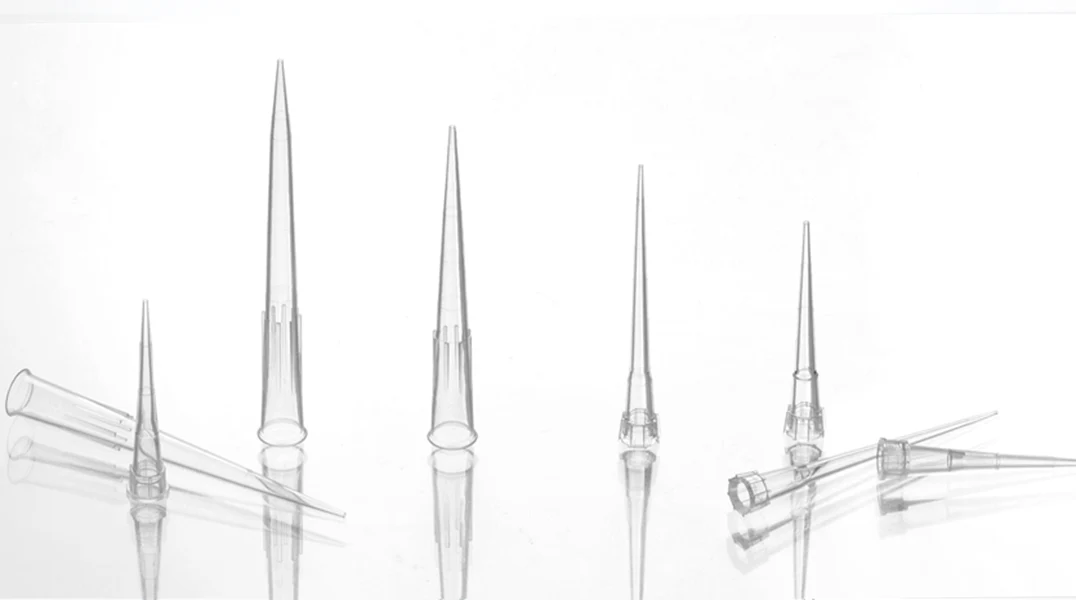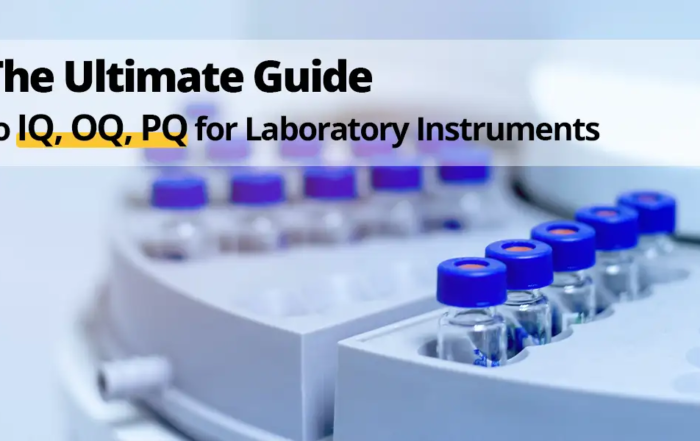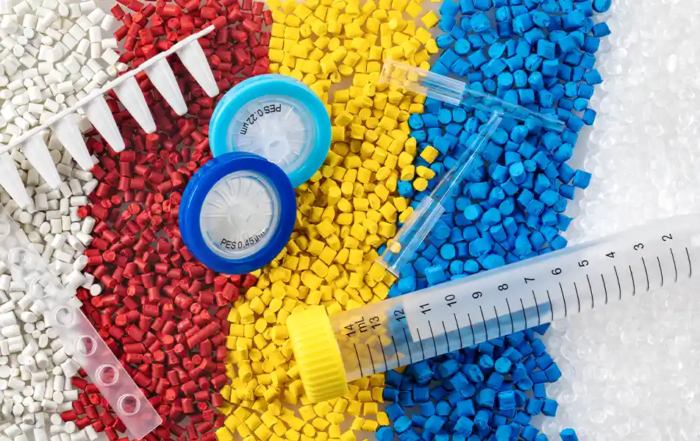Table of Content
Types of Pipette Tips
Based on Design
Standard Tips: These are the most commonly used pipette tips, suitable for general laboratory applications. They are available in various sizes to accommodate different volumes, making them versatile for a wide range of tasks.
Low Retention Tips: Designed with a hydrophobic inner surface, these tips reduce liquid adhesion, ensuring nearly complete sample recovery. They are particularly useful for handling viscous or expensive reagents.
Extended Length Tips: With a longer design, these tips allow users to access narrow or deep vessels, reducing the risk of contamination by preventing contact between the pipette and container walls.
Based on Sterility
Sterile Tips: These tips are pre-sterilized and packaged to prevent contamination, making them ideal for sensitive applications such as molecular biology or clinical diagnostics.
Non-Sterile Tips: These are suitable for routine tasks where sterility is not a concern, such as chemical analysis or general liquid handling.
Based on Specialized Functions
Filter Tips: Equipped with a filter to block aerosols and liquid contamination, these tips protect both the sample and the pipette from cross-contamination. They are essential in applications like PCR or working with hazardous materials.
Wide Orifice Tips: Featuring a larger opening, these tips minimize shear forces and are used for transferring fragile samples, such as live cells or genomic DNA.
Slim and elongated, these tips are specifically designed for loading samples into gel wells during electrophoresis.
Based on Volume Capacity
Microvolume Tips: Designed for precise handling of extremely small volumes, these tips are ideal for applications like qPCR or enzyme assays.
Used for handling high-volume transfers, such as reagent preparation, pooling, or media changes in cell culture experiments.With these common pipette tip categories above, researchers can effectively match their tools to their experimental requirements. Choosing the right tip not only enhances accuracy but also contributes to better experimental outcomes and workflow efficiency.Materials and Chemical Resistance
The material composition of pipette tips is a crucial factor in their performance, durability, and compatibility with various laboratory applications. While most pipette tips are made from polypropylene (PP), different materials and manufacturing techniques can influence their chemical resistance and suitability for specific tasks.
Polypropylene: The Standard Material
Properties of Polypropylene (PP)
Polypropylene (PP) is a thermoplastic polymer widely used in the manufacture of pipette tips due to its excellent balance of properties. One of its key characteristics is its durability and high resistance to mechanical stress, making it well-suited for repetitive use in precision tasks. Its lightweight nature further enhances ease of handling and ergonomic comfort during prolonged laboratory operations.
Chemically, PP is highly resistant to aqueous solutions, including dilute acids, bases, and most salts, which ensures compatibility with a broad range of laboratory reagents. Its semi-crystalline structure provides moderate resistance to non-polar organic solvents like alcohols and ketones, although it is less effective against stronger solvents, as discussed in its limitations. Additionally, PP is naturally hydrophobic, minimizing sample adherence and reducing contamination risks, although further treatments are required to achieve the extreme hydrophobicity needed for specialized low-retention tips.
Thermally, PP offers excellent stability under standard laboratory conditions, with a melting point of approximately 130°C. It can withstand autoclaving at 121°C, making it suitable for sterilization. However, repeated high-temperature exposures or prolonged use near its thermal limits may lead to gradual degradation. Its electrical insulation properties are another notable advantage, protecting against static charges that could interfere with precision workflows.
Environmentally, PP is non-toxic, recyclable, and resistant to biodegradation, making it a relatively sustainable choice for laboratory plastics. Its resistance to oxidation and moisture ensures a long shelf life under proper storage conditions, maintaining its structural integrity and functionality over time.
These properties make polypropylene a cost-effective and versatile material for pipette tips, balancing performance and affordability across a wide range of laboratory applications.
Limitations of Polypropylene
While polypropylene (PP) is widely used for pipette tips due to its durability, low cost, and resistance to many chemicals, it does have some notable limitations. One significant drawback is its susceptibility to certain organic solvents, such as chloroform, toluene, and xylene. Prolonged exposure to these solvents can cause the polymer to swell, soften, or degrade, ultimately compromising the structural integrity and performance of the tips. This sensitivity is due to the non-polar nature of PP, which makes it prone to interactions with similar non-polar solvents.Another limitation is its relatively low resistance to extreme hydrophobic or adhesive conditions. Although PP generally exhibits low surface energy, it is not sufficiently hydrophobic for some applications that require minimal liquid retention, such as when handling highly viscous or precious reagents. Special chemical or physical surface treatments, such as fluorination or plasma coating, are often employed to address this issue and create low retention pipette tips.Additionally, PP has a limited thermal stability compared to advanced polymers like polytetrafluoroethylene (PTFE). While it can withstand standard autoclaving at 121°C, repeated sterilization cycles or prolonged exposure to higher temperatures may cause warping or brittleness. This restricts its use in applications that demand frequent high-temperature sterilization. Furthermore, PP is sensitive to UV radiation, which can accelerate its degradation when exposed over extended periods, especially in laboratory environments with UV sterilization.These limitations highlight the need for careful consideration of material properties when selecting pipette tips for specific experimental requirements. For highly demanding applications, alternative materials like fluoropolymers or specially treated polypropylene may provide more robust solutions.
Enhanced Pipette Tip Materials and Coatings
Low Retention Coatings
Low retention coatings enhance pipette tip performance by making the interior surface more hydrophobic, reducing sample adhesion and ensuring efficient recovery of viscous or expensive reagents. These coatings are achieved through techniques like chemical treatments or plasma coating, creating a smooth, non-wettable surface that minimizes liquid retention. This improvement is particularly beneficial in molecular biology or analytical assays, where accuracy and reagent conservation are critical. Additionally, low retention coatings help reduce variability caused by residual volumes, making them indispensable in workflows demanding high precision and consistency.
Specialty Polymers
Specialty polymers, such as polytetrafluoroethylene (PTFE) and fluorinated ethylene propylene (FEP), offer exceptional chemical resistance and thermal stability, making them ideal for pipette tips used in demanding applications. These materials can withstand exposure to harsh solvents, strong acids, and bases, where standard polypropylene tips would degrade. Additionally, their highly non-reactive and hydrophobic surfaces prevent sample adhesion, ensuring maximum recovery of sensitive or precious reagents.Although more expensive than polypropylene, specialty polymers are indispensable for workflows requiring robust chemical compatibility and extreme durability. Their use is common in organic synthesis, combinatorial chemistry, and high-temperature processes, highlighting their importance in advanced laboratory environments.
Chemical Resistance of Pipette Tips
Behavior with Common Laboratory Solvents
Pipette tips, primarily made of polypropylene (PP), exhibit excellent resistance to many laboratory solvents. They are highly compatible with aqueous solutions, such as buffers, saline, and mild acids or bases, without degradation. Alcohols like ethanol and isopropanol are generally well-tolerated, making PP tips suitable for DNA/RNA workflows. However, strong organic solvents, including chloroform, toluene, and dimethylformamide (DMF), can cause swelling or weakening of the material over time due to their non-polar nature. For highly corrosive solvents or extreme conditions, specialty polymers like PTFE are preferred. Understanding solvent compatibility is critical to ensuring tip longevity and experimental reliability.
Practical Considerations
When working with pipette tips, selecting the appropriate material for chemical resistance is essential for maintaining accuracy and preventing degradation. For applications involving mild aqueous solutions, standard polypropylene (PP) tips suffice. However, when using strong solvents like chloroform or DMF, which can swell or degrade PP, it is crucial to opt for tips made from specialty polymers such as PTFE or FEP. Additionally, frequent exposure to UV sterilization or extreme pH conditions can weaken PP over time, so proper storage in a cool, dry environment is recommended. Regularly inspecting tips for warping or discoloration ensures reliable performance.
How to Choose the Right Pipette Tips
Pipette Tip Usage and Storage
Pipette Tip Usage
Proper usage and storage of pipette tips are essential to maintaining their performance and ensuring reliable experimental results. When using pipette tips, it is crucial to handle them carefully to avoid contamination or deformation. Always attach the tips securely to the pipette, ensuring a tight seal without excessive force that could damage either the tip or the pipette. During pipetting, maintain consistent technique to minimize the risk of air bubbles or liquid retention in the tip, both of which can compromise accuracy. For detailed guidance on pipette operation, including best practices for aspirating and dispensing liquids, refer to this comprehensive article on pipette usage ——
Pipette Tip Storage
FAQs
Q1. Do pipette tips have an expiration date? How can you tell if they have expired?
Yes, pipette tips can have an expiration date, particularly sterile tips, as their sterility is guaranteed only for a specific time frame. The expiration date is typically printed on the packaging. After this date, the sterility can no longer be assured, though the physical structure of the tips may still be intact. Non-sterile tips, on the other hand, do not expire in the same way but can degrade if stored improperly. To determine if pipette tips have expired or are no longer usable, check for signs of discoloration, warping, or brittleness, which may indicate material degradation. Proper storage in a cool, dry environment helps preserve their integrity.
Q2. How should you handle contaminated pipette tips?
Contaminated pipette tips, whether from hazardous chemicals or biological samples, should be disposed of according to your laboratory’s waste management protocols. For tips contaminated with biohazardous material, autoclave them before disposal to neutralize any pathogens. If the contamination involves chemicals, place the used tips in designated chemical waste containers. Never reuse contaminated tips, as doing so risks compromising experimental results and laboratory safety.
Q3. Can pipette tips be reused? Under what circumstances is it acceptable?
While pipette tips are generally intended for single use to ensure precision and prevent cross-contamination, there are exceptions. For applications where sterility is not critical, such as repetitive pipetting of the same non-hazardous solution, tips may be reused under strict conditions. This requires thorough cleaning and, in some cases, sterilization between uses to eliminate residue or contaminants. However, reusing tips is not recommended for sensitive assays, biological samples, or when working with volatile or hazardous chemicals, as even trace contamination can lead to significant errors.
Q4. Can pipette tips be used with strong acids, bases, or organic solvents?
Conclusion
The Ultimate Guide to IQ, OQ, PQ for Laboratory Instruments
In today’s highly regulated laboratory environments, ensuring the accuracy, reliability, and compliance of instruments is not optional—it’s essential. This is where 3Q validation comes into play. Comprised of Installation Qualification (IQ), Operational Qualification (OQ), and [...]
Why Perfect Bacterial Culture is Hard to Achieve in the Lab: Key Challenges
There's a running joke in biology labs: You can see bacteria everywhere except in the petri dish. There are also many similar bacterial culture memes online. Obviously, cultivating a “perfect” bacterial flora—a diverse, balanced, [...]
How to choose lab plastic consumables? A complete analysis of material characteristics and application scenarios
What is the most common material in the laboratory? The answer is often "plastic". Plastics are indispensable in modern laboratories, playing a crucial role in ensuring the efficiency, safety, and precision of various scientific processes. [...]



